How to Skim Coat to Remove Wall Texture
If you’ve been following my home remodels, you know I am not a fan of rough wall texture and do a lot of skim coating to get smooth walls. Skim coating means skimming a thin layer of joint compound or plaster to your walls. The materials needed are fairly inexpensive so the cost of having it done by a professional is mostly for labor. If you have the time and patience to do it yourself, skim coating can be done using a Magic Trowel and a thick nap paint roller.
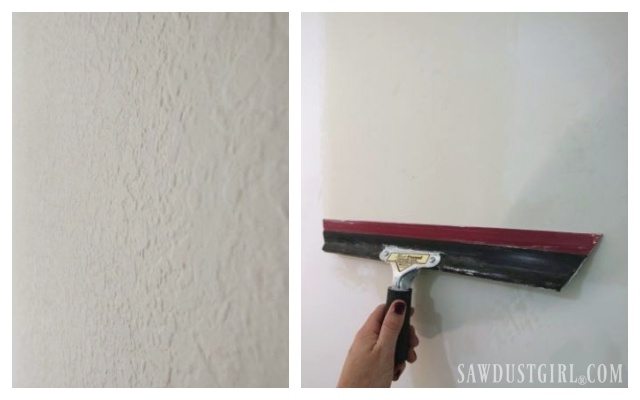
How to skim coat
Prep your space
Drywall work can get really messy so take a little time to prep your space before you start mixing your drywall compound. Cover the floors, furniture, appliances, etc, and seal off the room you’re working on to contain the dust to that room. If you just jump in and start skim coating, you’ll probably end up cleaning drywall dust out of every nook and cranny of your house for a few months.
Baseboards and Outlets
Remove your baseboards. Trust me. It will be way less work to reinstall them than try to work around them. Also remove outlet and switch covers and tape off all outlets to keep drywall cement out of them.
Gather your supplies
- all purpose joint compound
- Paint tray, mud pan, or 5 gallon bucket
- mixing attachment for your drill
- thick nap paint roller
- spray bottle with water to thin you joint compound
- wet rag
- Magic Trowel
- drop cloth (floor coverings)
- drywall sander
If you’re doing a small area where you’ll only need one bucket, I’d choose a ready mix joint compound. It costs about $15 for a 5 gallon bucket. So for $15 you get the mud and a bucket.
Powder joint compound is much cheaper. You can get about 4 times the coverage with dry mix mud. If you’re doing a LOT of skim coating, dry is probably a cost effective option. You still need the 5 gallon bucket which runs about $4-5.
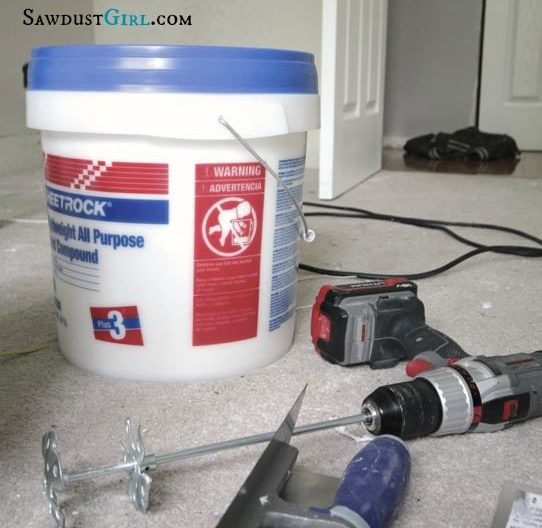

Prepare the joint compound
Use a a mixing attachment for your drill to mix the joint compound to the consistency of thick pancake batter. It’s got to be thin enough for you to smooth it on the wall but not so thin that it just drips and dribbles down the wall. You may have to play around with it until you get the “just right” consistency. Most importantly, make sure there aren’t any lumps.
If you’re using ready mix mud, add a little water at a time so you don’t end up making it too runny. This is where dry mix can be beneficial. If it does end up too runny, add more dry mix.
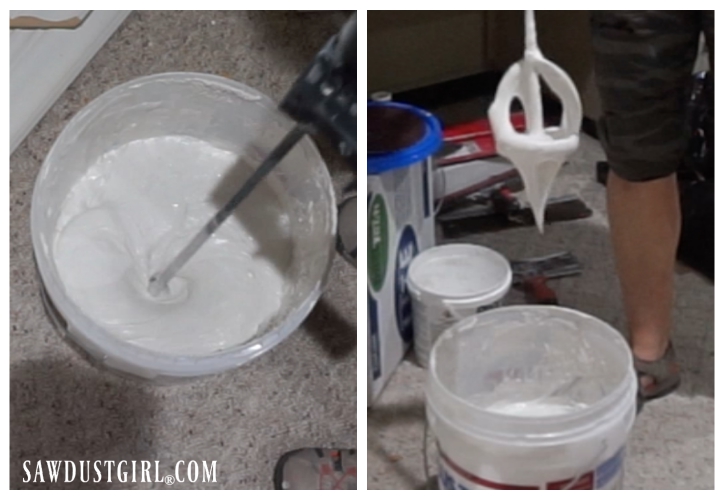
Apply joint compound to wall
Work in small sections at a time. The mud is watered down so it will dry fairly quickly and you have to apply it to the wall and then skim it smooth. I generally work in 4’x4′ sections. Depending on the temperature and humidity of the room you’re working in, you may be able to do larger sections.
Using a thick nap paint roller, apply a generous amount of mud to the wall. Using a roller allows you to get more compound on the wall faster than if you were scooping it out with a putty knife. You can pour joint compound into a roller tray or dip the roller directly into the 5 gallon bucket.
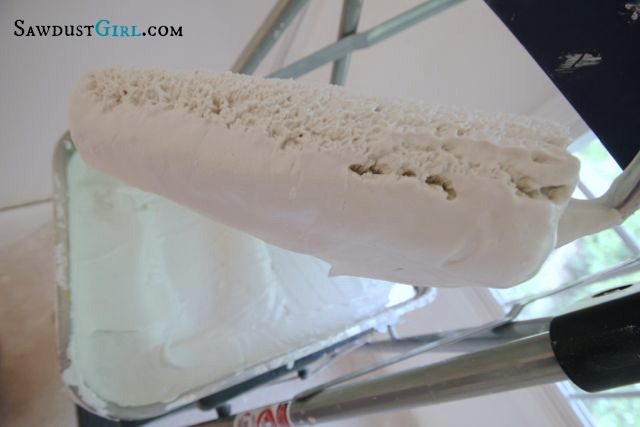
I generally prefer the bucket method because it’s faster but it is also messier because the excess mud drips off the roller as you pull it out of the bucket.
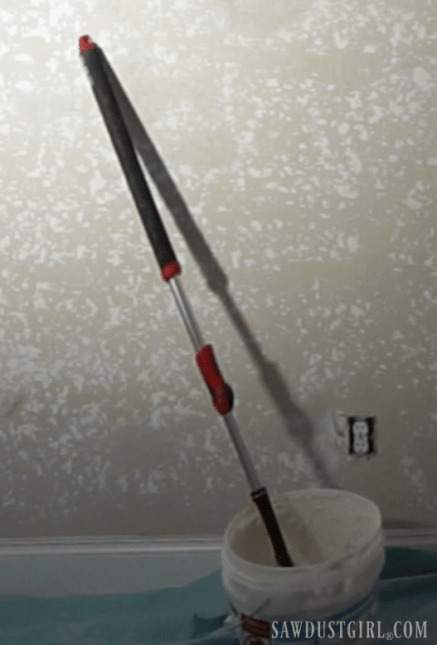
Skim the walls with the Magic Trowel
After rolling the mud onto your first section, use the magic trowel to smooth it out. The first coat won’t be perfectly smooth. The compound is filling the voids that around the raised surfaces in the existing texture. If you have a really heavy texture, you’ll need more layers of joint compound.
- Each coat of mud should be smoothed in the same direction as it was applied onto the wall with the roller.
- Alternate directions of each consecutive coat.
- If you rolled the mud onto the wall vertically on the first coat, switch to horizontal application for the next coat.
After smoothing out your first section of wall, you’re ready to roll another section with joint compound.
- Keep a wet edge. That’s where the spray bottle full of water comes in handy. Before you start rolling compound onto your second section, lightly mist the edge of the area you just smoothed.
- Slightly overlap the first section as you roll the second section.
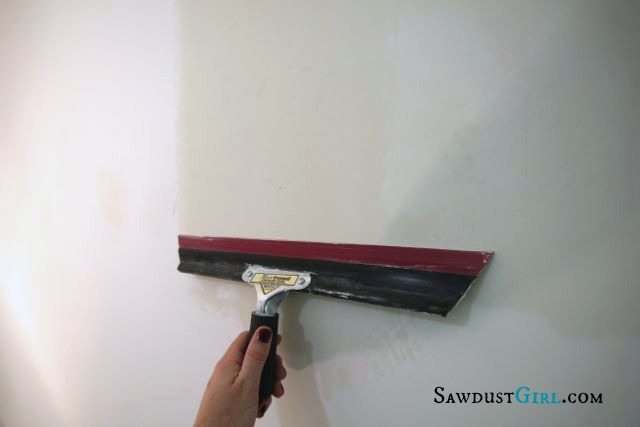
The Magic Trowel is like a squeegee. It’s a rubber blade on a handle. It does come with a cover over the blade. Make sure to remove the blade cover!
- Use your damp rag or spray bottle to wet the blade before use.
- Pull the Magic Trowel over the compound, smoothing it out.
- Squeegee the mud in the same direction that you applied it with the paint roller.
If you have really heavily texture patterns, the first coat will not produce perfectly smooth walls. The Magic Trowel may create gouges or new lines. Don’t freak out. The next coat will fix that.
Light your work surface
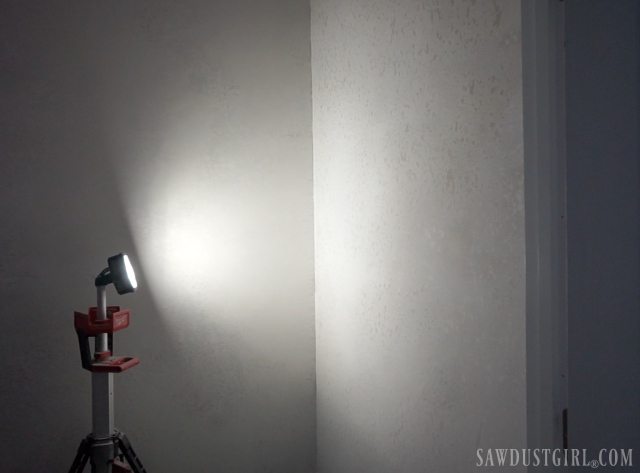
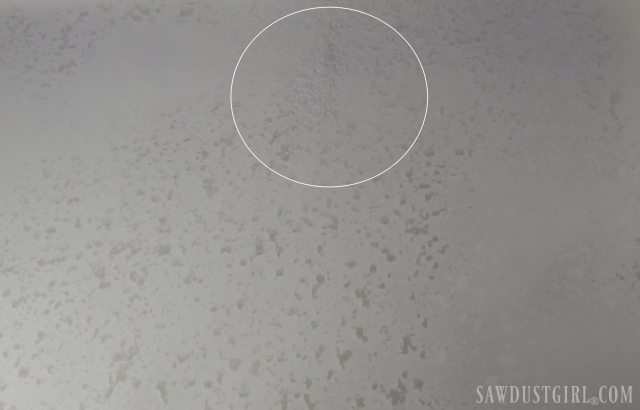
Shining a light at an angle on the wall you’re working on. The angle is important because it allows you to see more imperfections than you see with down lighting. This is true when priming and painting as well. When you think you’re done, move the light so it’s shining from a different angle. You’ll be surprised to see how many areas you missed. The below picture demonstrates a wall I thought was finished until I moved the light and illuminated my wall from a different angle.
Sanding Drywall
You can lightly sand in between coats but it’s not necessary. Each consecutive coat with the Magic Trowel will make the wall more and more smooth. If anything, you may have lines created by the excess mud sliding off the edge of the trowel as you skimmed over the wall. These lines are very easy to get rid of with a quick sanding. If you find a big blob of dried mud you can scrape it off with a drywall knife, rather than create all the dust from sanding it away.
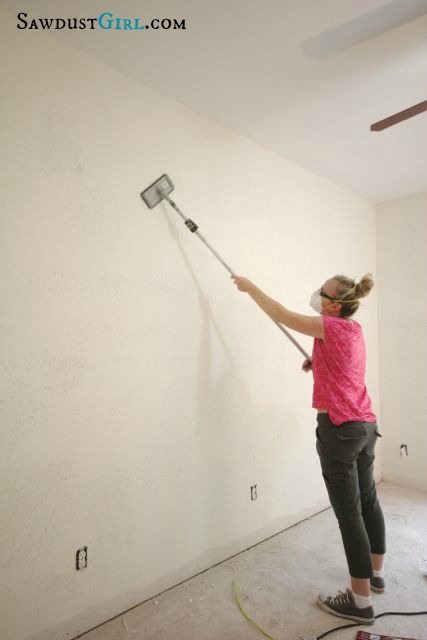
Drywall sanding can be VERY dusty. You shouldn’t have much to sand after skim coating. Just a gentle sanding over the whole surface with a very light grit sandpaper. Sanding without a vacuum attachment will make a BIG MESS everywhere in your house. You have 3 options:
- Use a regular pole sander and worry about cleaning up the dust later. Make sure you wear a dust mask or respirator.
- Wet sand. Use a slightly damp tiling sponge to gently rub away lines and imperfections.
- Use a dust free drywall sander (This is definitely worth the $30 price tag.)
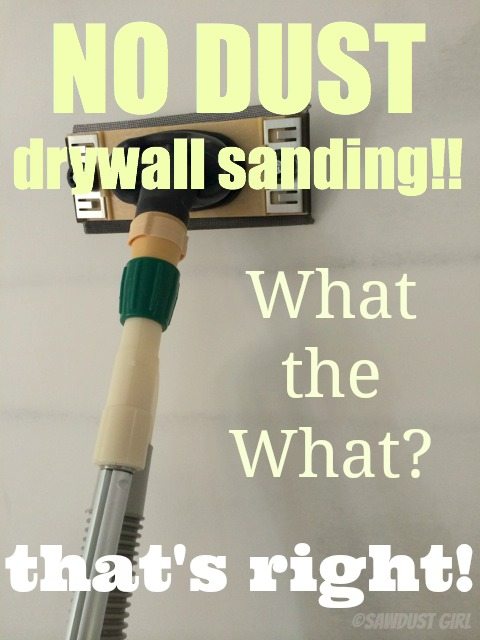
I’ll be frank with you, skim coating is messy. It takes some practice to learn the skill. It’s hard work. It’s tiring and can be frustrating. But smooth walls are worth the effort!
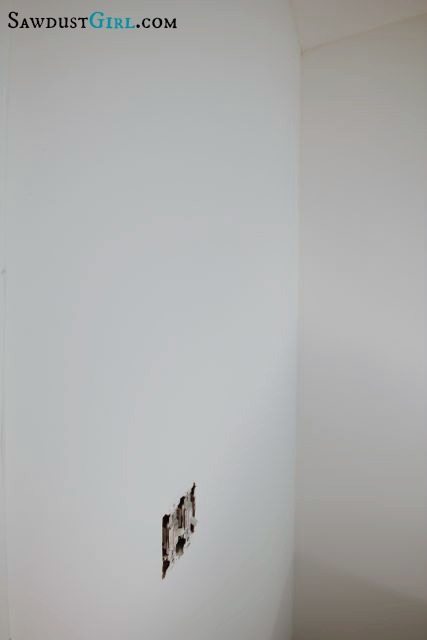
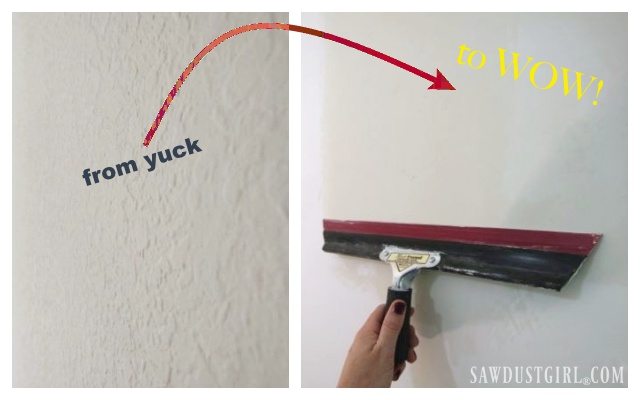
Right?
It’s definitely a personal thing. Some people like orange peel and other textured finishes. Give me a crisp, clean, smooth wall any day of the week! So what do you think? Now that you know how to skim coat, are you going to give it a try? Just remember to protect your floors. Unless you’re working in a room where you’re going to remove the carpet. If that’s the case, go ahead and use that carpet as your drop cloth and don’t worry if you drop blobs of joint compound. Just don’t step in them and track it all over the house. Ehem…lesson learned!
Prime and Seal
One more thing; Just like with new drywall, make sure to prime skim coated walls with a PVA primer before painting. PVA primer seals the pores, and prepares the walls for paint. A lot of paint nowadays, is paint+ primer in one bucket but I always use PVA primer first. It dries quickly and then I can move on to paint.
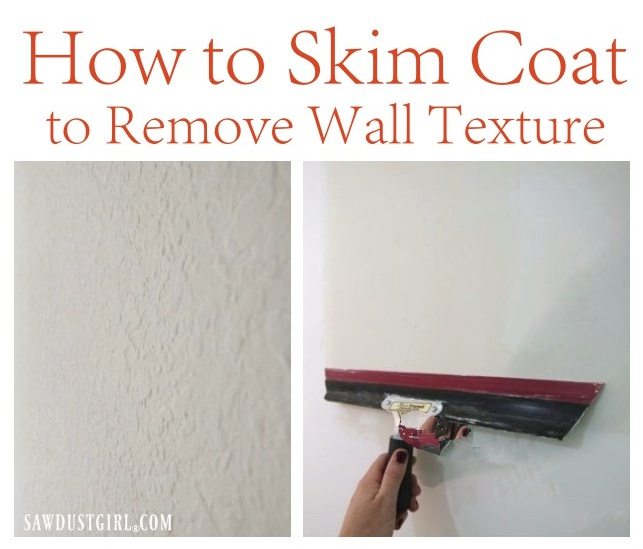
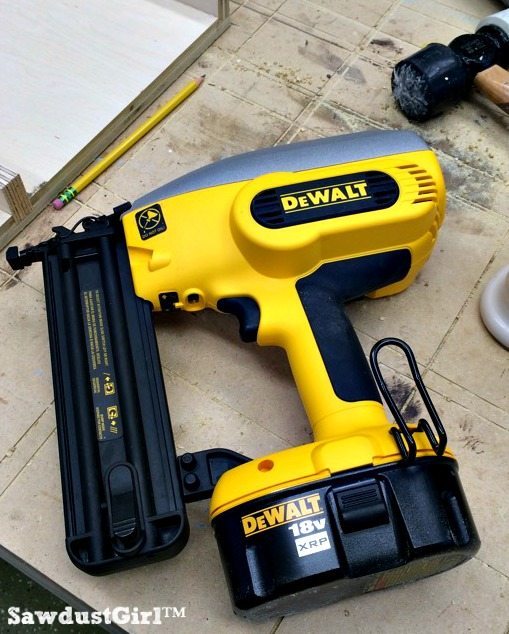
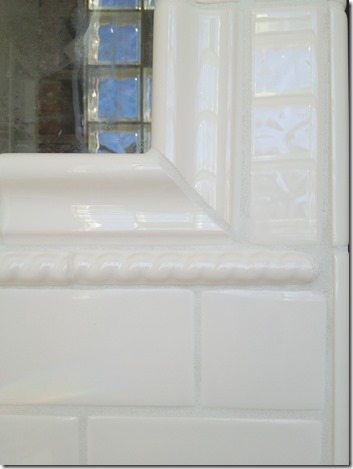
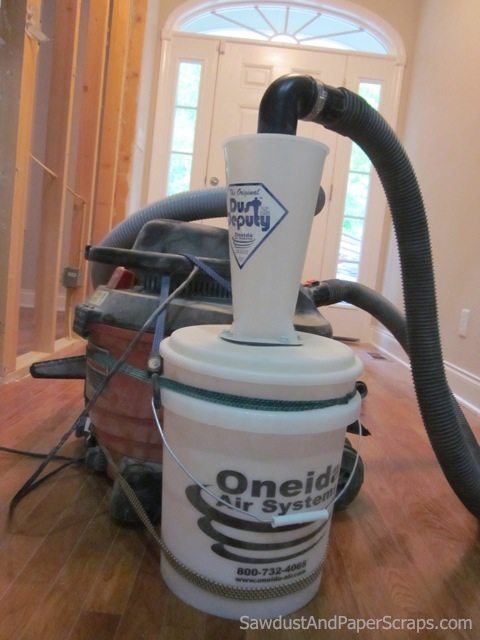
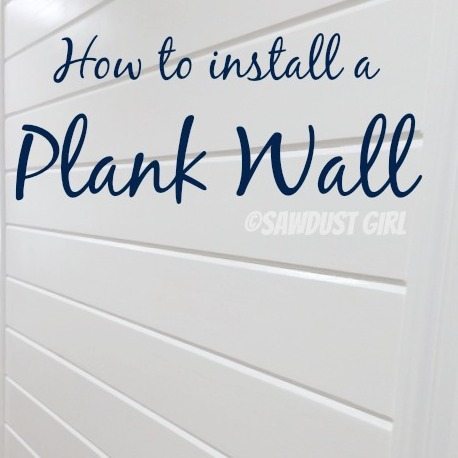
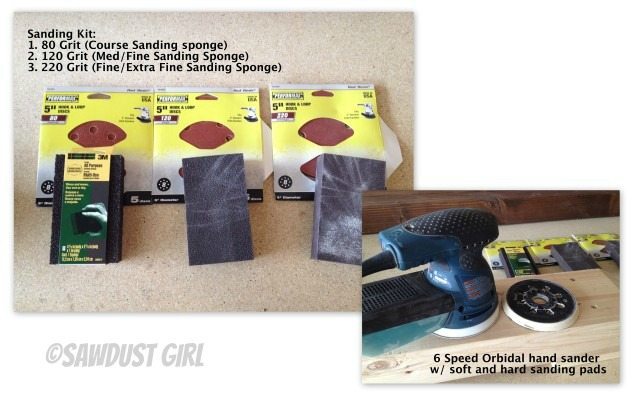
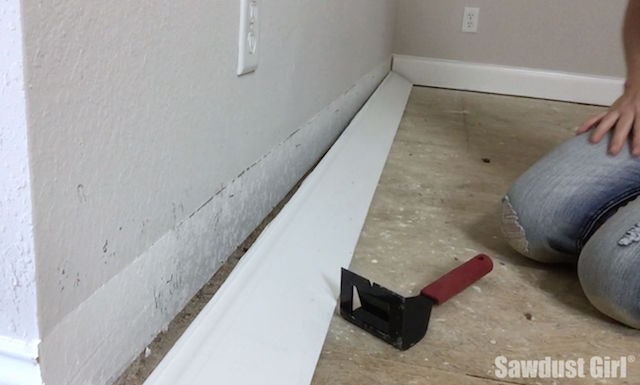
What do you reccommend for reparing cracks and holes in plaster walls?
Thanks so much for this guidance! I have a house built in 1910 and want to install aluminum flashing as a backsplash on a wall with heavily textured plaster. Since there’s certainly lead paint beneath the current color, sanding isn’t an option. I’m lucky I don’t have to achieve a perfect finish. Just can’t have little plaster bumps showing through the sheet of metal.
Actually, I meant PLASTER walls! LOL!
I want to make my walls look like white rustic plastic walls. What do you think of mixing paint in with the joint compound to create that?
Use a 4″ or 6″ drywall knife and just scrape the old sand paint off the wall. I was amazed at how smooth the wall was when a hired pro did it to my bathroom. I’ve done it on other walls myself.